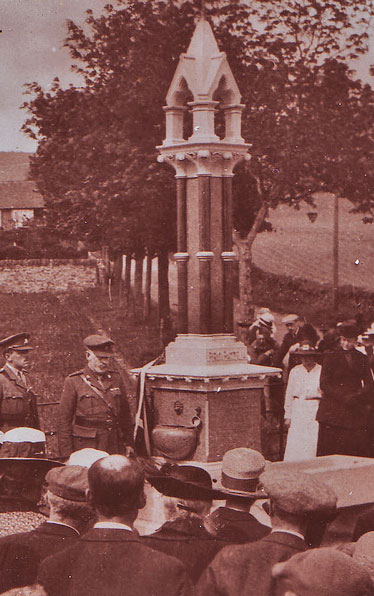|
|||||||||
CONTENT Introduction |
Most British war memorials were unveiled between 1920 and 1925. These ceremonies were often the most significant public events which had taken place in the town or village for years and were attended by the entire communities. Shops were closed and other activities suspended. The ceremony was carefully orchestrated with elaborate processions to the memorial. Spectators were precisely marshalled around it. It was important that every facet of the community was represented: schoolchildren, choir, ex-servicemen, the bereaved and the general public were allocated their places. Sometimes an enclosure was organised for the bereaved, who had to apply for a certain number of tickets in advance. The proceedings were usually presided over by a civic dignitary who welcomed visitors, and spoke of the history of the memorial and the local war effort. The actual unveiling of the monument, usually covered with a Union Jack, was followed by a religious service, often conducted jointly by local churches, with hymns and dedicatory prayers sanctifying the memorial and commending the dead to God. In addition, extracts from the standard burial service were often used, as well as a bugler playing the Last Post followed by Reveille. Periods of silence were common as were solemn readings of the names of the dead. At the end of the ceremony the bereaved were allowed to place floral tributes. The ceremony enabled authorities to state how the memorial should be understood and the meaning of any iconography; it was an opportunity for churchmen to give an additional sermon, and for visiting dignitaries to reiterate the meaning of the war and the hopes of the future. Above all, which is what seemed to have made a lasting impression on those who witnessed such ceremonies, they were highly emotive and dramatic events. Many accounts report that the spectators were moved to tears. Such an outlet for sorrow, so uncharacteristic of the British public at the time, revealed the force of grief, which for once was given a place to spill over, to be shared and acknowledged. |
haigh received xxx at the end of his time while oothers haigh funs When thinking about war memorial think about what functions it server; what do those who decide to build it, pay and/or support it hope it will achieve. |
| PEACE PLEDE UNION 1 Peace Pssage London N7 0BT | ||

